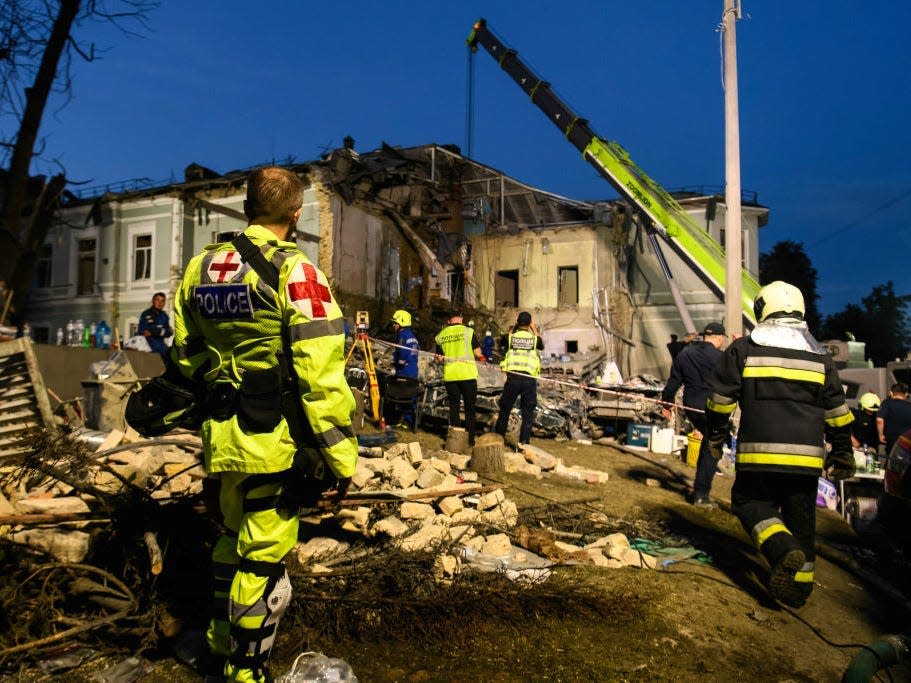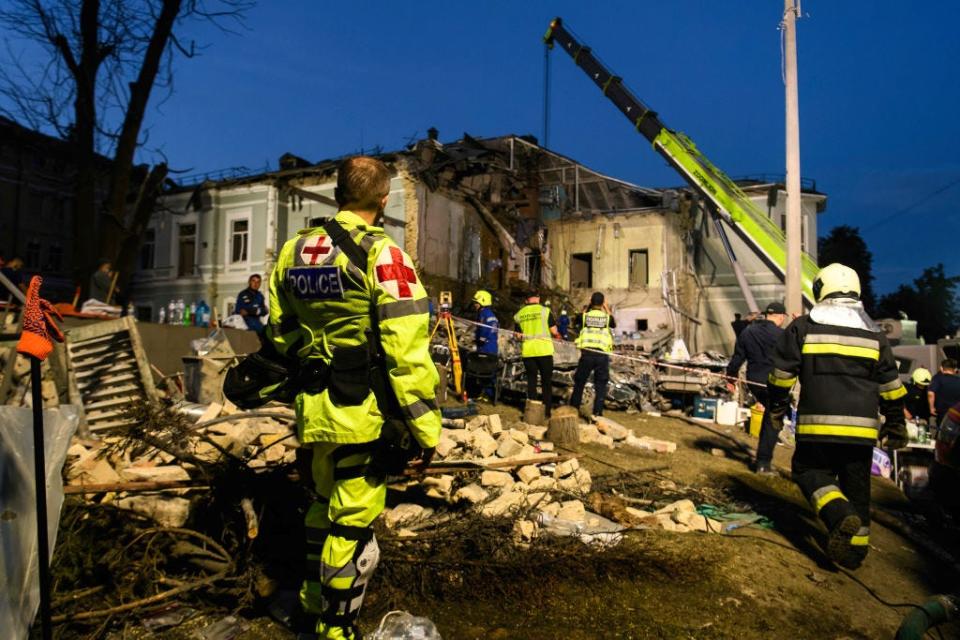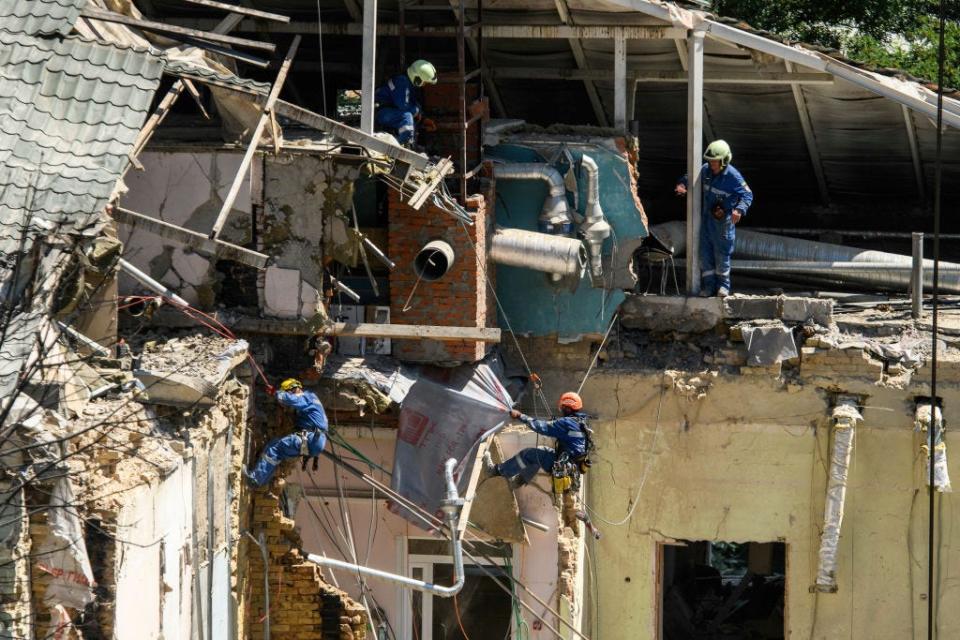Russia looks to have changed tactics in the missile strikes that wrecked a children's hospital, leaving Ukraine's air defenders with almost no time to respond, analysts say

Russia appears to have changed its tactics in its Monday missile barrage, making it tougher on Ukrainian defenders.
War analysts say Russia may be innovating its tactics, and possibly its technology as well.
ISW said the intent is to "maximize damage."
Russia seems to have changed tactics in a Monday missile strike that struck targets across Ukraine, including a children's hospital, to "maximize damage," war analysts said.
"Unfortunately, the enemy is constantly improving not only reconnaissance and strike UAVs, but also other means of air attack — cruise and ballistic missiles," former Ukrainian Air Force spokesperson Col. Yuriy Ihnat said on Facebook regarding Russia's latest barrage of cruise and ballistic missiles.
Ihnat said that some of Russia's missiles flew at incredibly low altitudes, with some flying as low as 50 meters, making them more difficult to shoot down.

"People on the ground sometimes squeeze the impossible out of available weapons and equipment to shoot down as many Russian missiles and drones as possible," he said. He said that out of the 44 Russian missiles launched, Ukraine was able to shoot down 33.
The weapons that broke through, like the Kh-101 cruise missile that struck the Okhmatdyt Children's Hospital in Kyiv, may have been able to do so because the Russians "may have innovated their tactics and/or technology," war experts said, noting Ukraine has been pretty good at shooting down Russian cruise missiles.
Analysts at the Washington-based Institute for the Study of War suggest that Russian changes are likely intended to "inflict maximum damage on Ukrainian infrastructure by giving Ukrainian air defense practically no time to respond until the missile is already within close range of the ground."

In addition to launching missiles at extremely low altitudes, Ihnat said Russia has also improved the capabilities of its missiles with approaches like heat trap technology designed to fool air defenses. Other innovations may make weapons harder to detect.
"Russia has consistently adapted the strike packages it uses against Ukraine to take advantage of Ukraine's air defense shortages," ISW said, "and the July 8 strikes represent a new and adapted strike package that Ukraine will need to learn to respond to with requisite levels of Western-provided air defense systems."
Russia's missiles struck targets in several cities, including the Okhmatdyt Children's Hospital in Kyiv, on Monday, killing at least 39 people, per the latest figures.
The Russian Ministry of Defense denied claims that it intentionally targeted Ukraine's civilian infrastructure and argued that the weapon that struck the hospital was actually a Ukrainian surface-to-air missile.
Although Russia has attacked civilian centers on many occasions, the Kremlin has often claimed that it does not target civilian infrastructure.
In the aftermath of Monday's strike, weapons and war experts, citing visual evidence of the strike, argued that Russia is "gaslighting" because the weapon that struck the hospital was definitely a Russian Kh-101 cruise missile.
Read the original article on Business Insider


